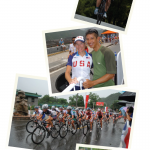Golfer Phil Mickelson developed an acute oligoarthritis while preparing for the 2010 U.S. Open Tournament in Pebble Beach, Calif. His right ankle and right wrist felt quite painful, and within days he developed a dactylitis involving his left index finger.3 Nonetheless, he finished a respectable fourth in the tournament. Days later, after shoulder pain severely limited his swing, Mr. Mickelson sought rheumatologic help. It is public knowledge that he was immediately started on an anti-TNF biological drug, and as his countless television commercials and print advertisements attest, he is back on top of his game.
Because the difference between victory & defeat is often measured in milliseconds, athletes continuously seek the competitive edge that allows them to harness a hidden burst of energy in critical moments when their stamina may be flagging.
Then there is the tale of tennis star Venus Williams. In 2007, Ms. Williams, the winner of seven Grand Slam events, began feeling short of breath. She was diagnosed with exercise-induced asthma, but the prescribed medicine was not helpful. As she recalled: “I’d go to doctors, but I never got any answers, so there was nothing I could do but keep going. It was frustrating, always being in the dark and not having anything to help me but my own will.”4 This sounds eerily similar to what we often hear behind closed doors. Although details about her workup are confidential, one might speculate that based on autoantibody profile results, her rheumatologist considered the diagnosis of Sjögren’s syndrome. Ms. Williams says she was relieved to finally hear an explanation for her “swollen hands, chronic fatigue and misshapen joints.” Despite her condition, Ms. Williams is currently ranked 12th best in the world at 36, normally considered a senescent age for a professional tennis player!
Gaining a Competitive Edge
Because the difference between victory and defeat is often measured in milliseconds, athletes continuously seek the competitive edge that allows them to harness a hidden burst of energy in critical moments when their stamina may be flagging.
There may be three ways to achieve this goal: first, the legitimate way, through an even more intensive training regimen and, perhaps more importantly, by learning to overcome adversity in their personal lives. An in-depth interview study of British Olympic gold medalists found that adversity-related experiences, such as significant sporting failures, injuries, political unrest and death of a family member, were deemed vital in their psychological and performance development.5


